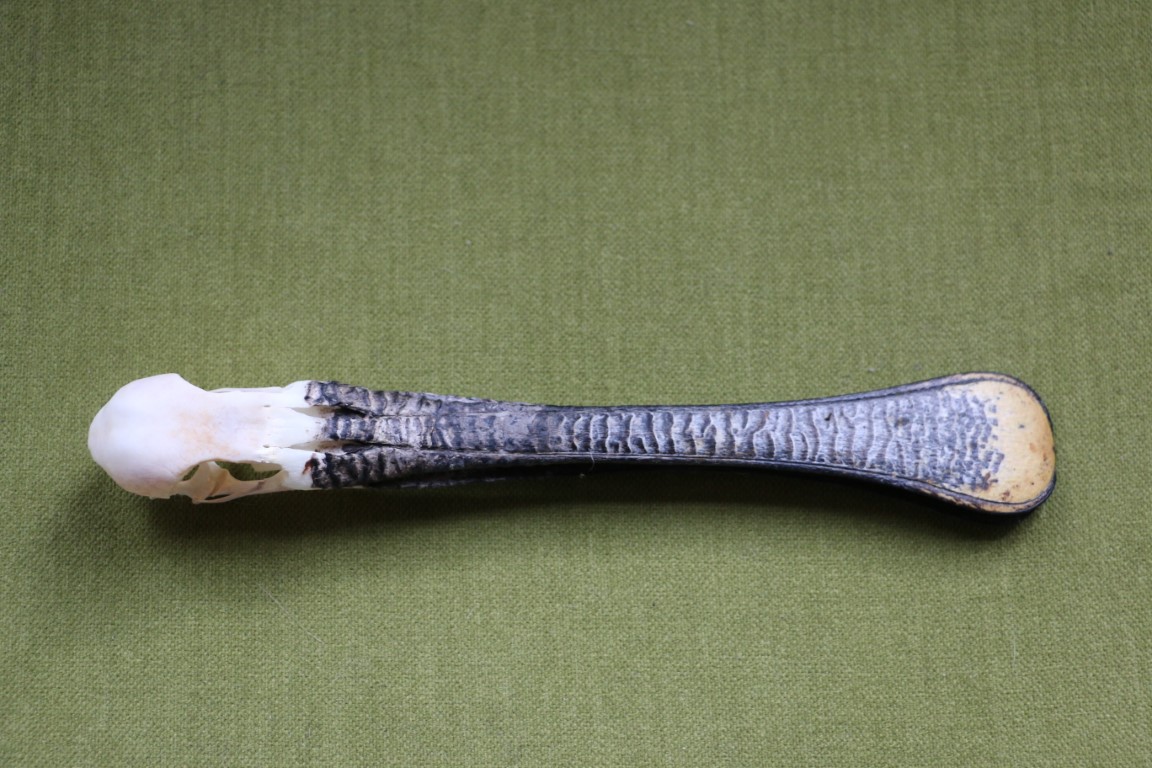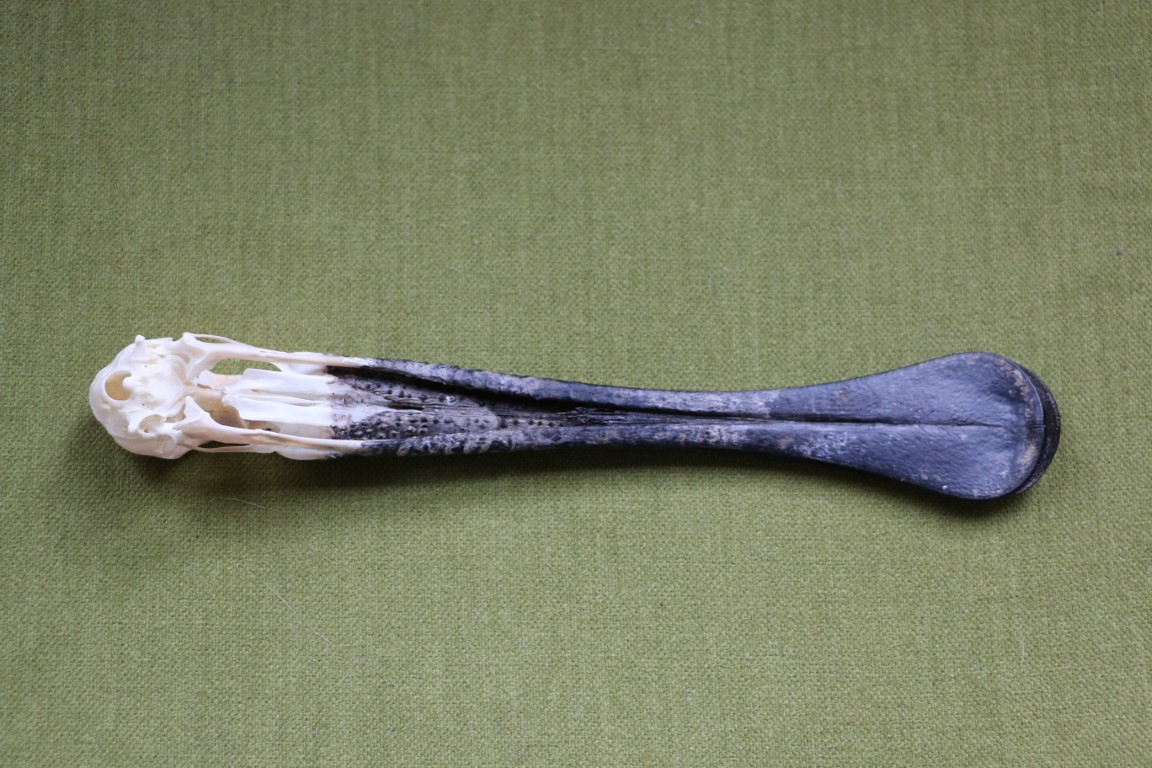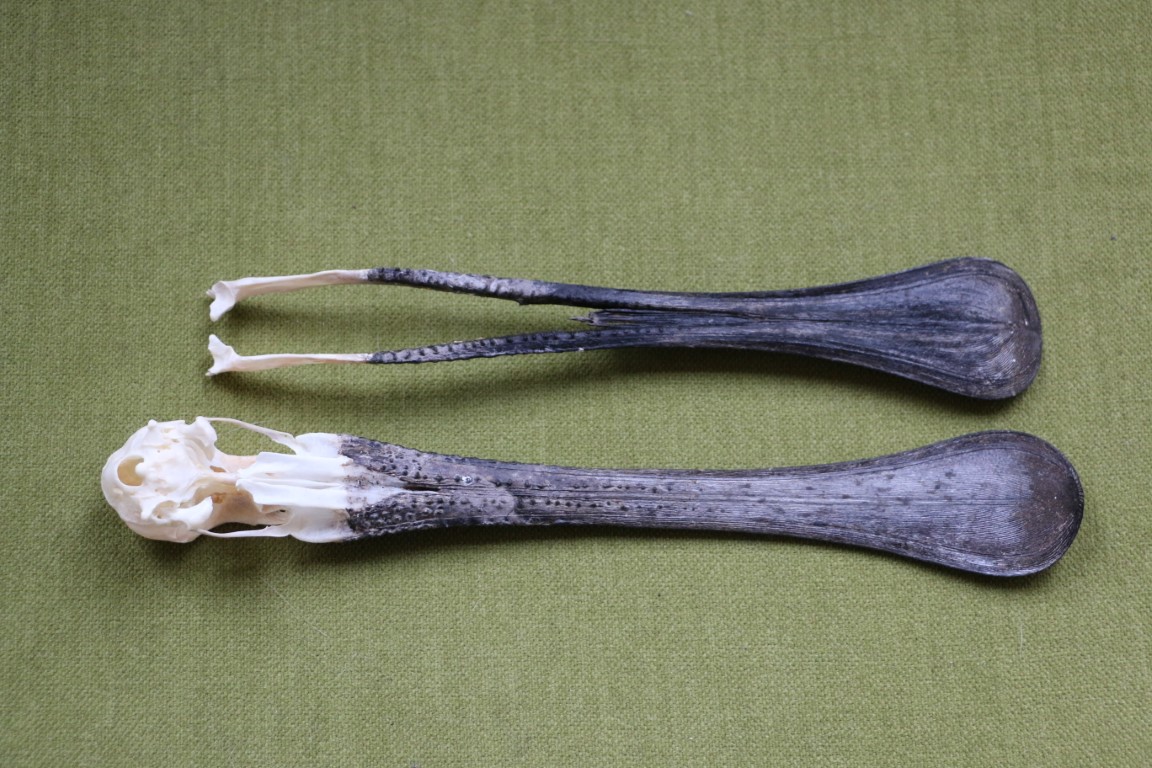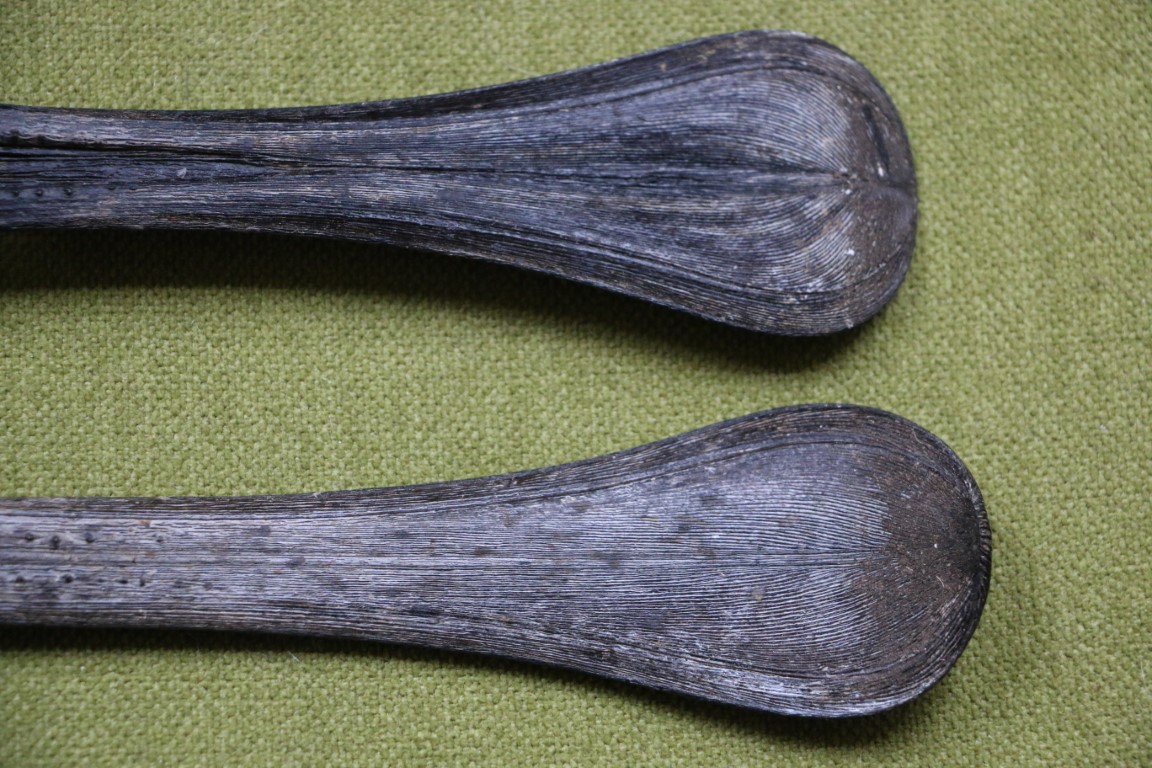Food of spoonbills
Spoonbills find their food by wading through shallow water while sweeping their bill from side to side through the water to tactilely search for prey. The spoon-shaped bill has grooves that are filled with highly sensitive sensory cells. This allows spoonbills to also find prey at night or in murky water. Upon catching a prey, spoonbills position the prey between the tips of their bill before throwing it into their throats.
In early spring, food mainly consists of freshwater prey (e.g., sticklebacks, amphibians, larger aquatic insects like dragonfly larvae and other invertebrates). Spoonbills are then mostly foraging in shallow polder ditches, riparian zones and marshes.
In marine intertidal areas, where spoonbills are increasingly foraging in the course of spring and in summer, they feed on shrimp, gobies and young flatfish.
The foraging area stretches up until 40 km from the breeding colony. After the breeding season, spoonbills gather at places where they can quietly roost and moult and have easy access to foraging habitats.
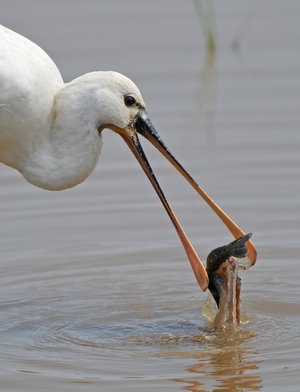
A spoonbill catching a crayfish - Photo: Marc Raes
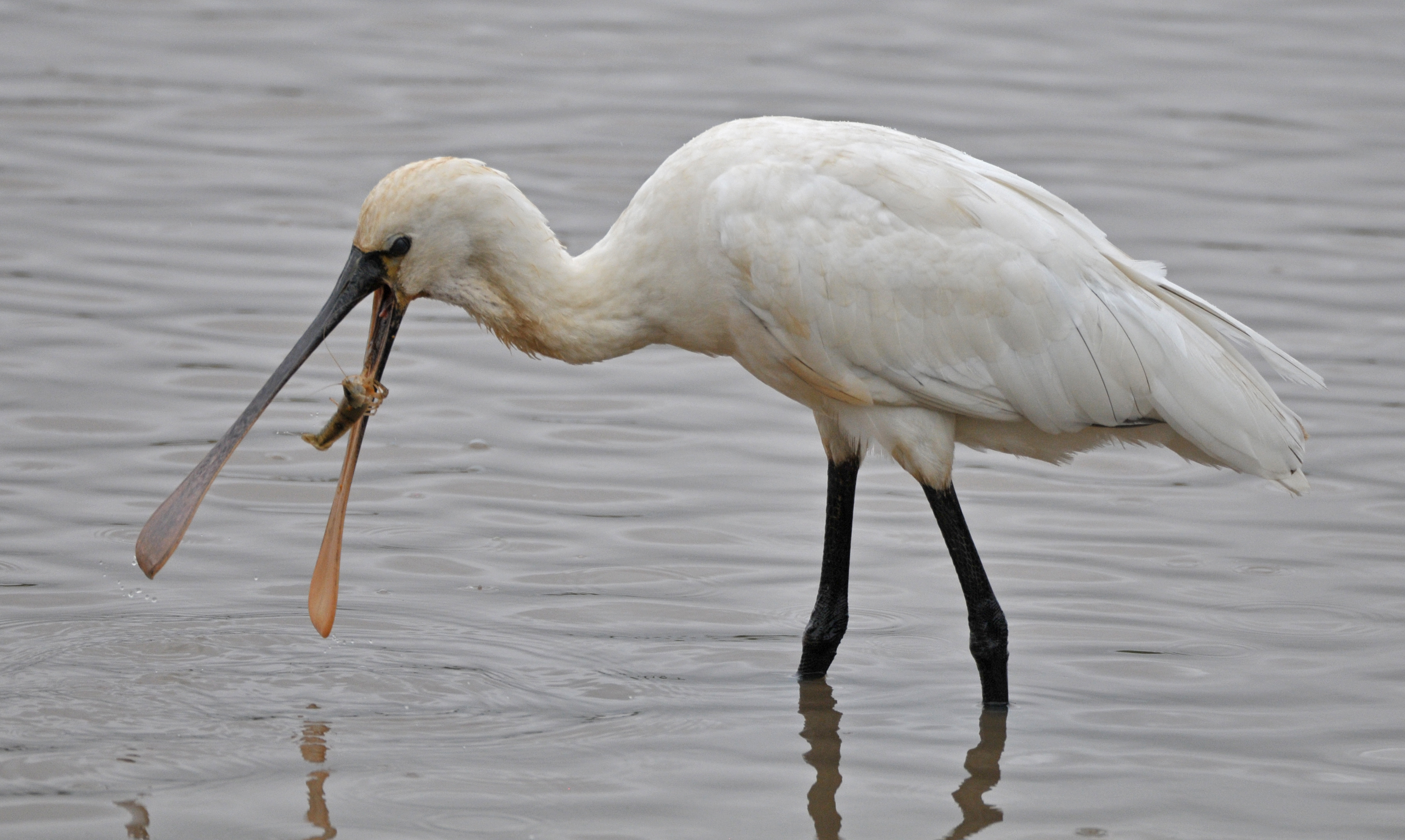
The crayfish is thrown into the throat - Photo: Marc Raes
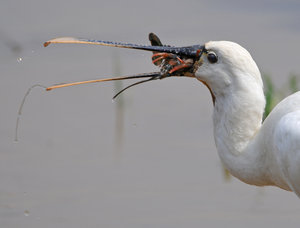
The crayfish is thrown into the throat - Photo: Marc Raes
The spoon-shaped bill contains grooves with highly sensitive sensory cells which allows spoonbills to also find prey at night and in murky water